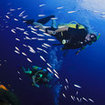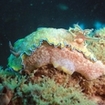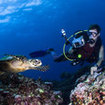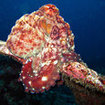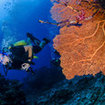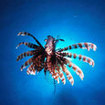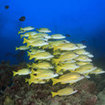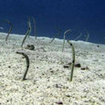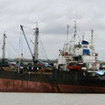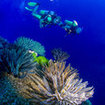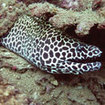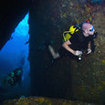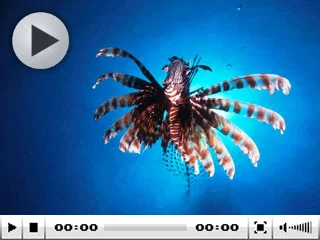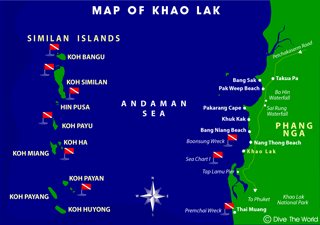"Over 24 years making dreams come true for divers... just like you"
Contact us now at ask@dive-the-world.com
Khao Lak Diving Guide
Similan Liveaboard Adventures
- Page contents:
- Introduction
- The dive sites
- Diving season/sea conditions
- Reef basics
...Good for: Small animals and wrecks
Not so good for: Beginner divers, visibility, and snorkelling...
Arriving like a refreshing summer breeze on the Thailand diving scene, Khao Lak is now firmly establishing itself as a favourite destination for discerning scuba divers. With the Similan Islands located directly across the Andaman Sea and within easy reach of Khao Lak, and those other monster dive attractions of whale sharks and manta rays just a little further up the coast, who could blame them?
Khao Lak's undeveloped coastline, beaches and forests are a natural and convenient springboard to explore Thailand's ultimate liveaboard diving destination - the Similan Islands, Koh Bon, Koh Tachai and Richelieu Rock.
Closer to home, some of Khao Lak's local dive sites are worthy of exploring, just 30 minutes boat ride from shore. The most regularly visited site in Khao Lak is the Bunsoong Wreck, a well-established artificial reef where you can see juvenile barracuda and snappers, trevallies and moray eels. More recently the Premchai tin dredger sank in 2001 in 21 metres of water, making an ideal alternative dive. This site is often silty but has some wonderful soft corals, scorpionfish and morays.
The Sea Chart I, a boat sunk in almost 40 metres, is ideal for advanced and technical divers. This wreck is regularly visited by schools of batfish and rainbow runners, and is home to lionfish, nudibranchs and octopus, as well as more unusual frogfish and ghost pipefish.
Khao Lak has a couple of nearby coral reefs too. Khao Naa Yak is a shallow 12 metre dive, ideal as a relaxing warm up to the Similan Islands. Thai Muang Reef is a reef ecosystem a little further from Khao Lak. It is one of the largest and healthiest reef structures in Thailand and is another great option.
A world away from the commercialism of Phuket, diving holidays in Khao Lak are ideal for honeymooners, families, couples and adventurous divers.
Khao Lak's Dive Sites
Click on a twisty ('++' sign) to show more detailed information on each Khao Lak dive site:
++ Bunsoong WreckThis wreck started her days with her sinking in 1984. Bunsoong is an old tin ore processor that is 60 metres in length, 12 metres wide and 6 metres high, and lies positioned in a north to south direction, in open sea but quite close to the Khao Lak shoreline.
|
++ Sea Chart I WreckRecent shipwrecks always take time to settle into the marine environment, become colonised by sessile life forms, and come to represent home to mobile marine creatures. So it is with the Sea Chart I, a bulk carrier that sank en route from Burma to Vietnam via the Malacca Straits.
|
++ Premchai WreckThis wreck sank in September 2000, just off Thai Muang Beach, near Khao Lak. The Premchai lies on its side in 20 metres of water, with its shallowest section being 15 metres deep. It is therefore an ideal spot for intermediate divers.
|
++ T13This site is close to Bang Niang, off-shore opposite the La Flora Resort. It is comprised of 17 trucks, several concrete blocks, and the ex-Thai navy boat T13. It was ceremoniously sunk on 22nd March 2014 as an artificial reef to encourage marine environmental benefits in the area as well as to create another Khao Lak dive site.
|
Dive The World Thailand Recommendations: Bunsoong Wreck and Sea Chart I.
Diving Season in Khao Lak
You can dive in Khao Lak from October to May but the best conditions for scuba exist from November to April. This is the northeast monsoon, meaning it is drier during this period. You can expect water temperatures around 26–30°C throughout the year, with the dry season being the warmest. It is also the time with greatest water clarity with visibility pushing 30m at times.
Many of the creatures you might expect to see in Khao Lak are present throughout the year. These include reef sharks, leopard sharks, and sea snakes. If it is the bigger stuff that you are interested in then February to April is the optimal time to come to see whale sharks and manta rays.
The Similan liveaboard season runs from early November to mid-May and, since this destination is so nearby, it is the reason why most divers, indeed most tourists, visit Khao Lak. At this time of the year, calmer water makes the crossing easier.
Reef Basics
Depth: 12 - 18m
Visibility: 2 - 15m
Currents: Moderate
Surface Conditions: Can be rough
Water Temperature: 26 - 30°C
Experience Level: Intermediate
Number of dive sites: 5
Distance: ~90 km north of Phuket (1½ hours)
Access: Similan liveaboard and day trips
Recommended length of stay: 1 - 2 days, or 1 week to dive all destinations that are accessible from here
• Khao Lak tourist information
CUSTOMER TESTIMONIALS
... I just want to give you feedback about my 3 diving days I booked. It was amazing and I really enjoyed this trip! Everything worked perfect and it was all well organized. My guide was Justin, and he was very nice and it was so much fun! I really felt very safe. It was a great time, thank you ... Janine Wenker, Germany


